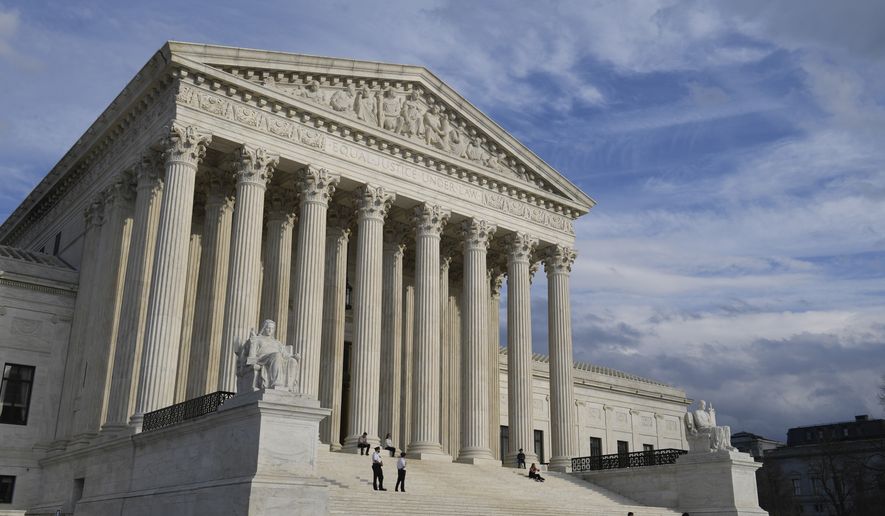The Supreme Court’s report on its probe of the leak of a draft abortion opinion last year revealed weaknesses in an antiquated security protocol, but former law clerks say it’s really respect for the court — and its honor system — would prevent a future leak.
“At the heart the problem isn’t one of poor security, but institutional breakdown,” said Carrie Severino, a former clerk to Justice Clarence Thomas in 2007 who now leads the Judicial Crisis Network. “This [leak] signals that that respect isn’t there any longer.”
Mike Davis, a former clerk to Justice Neil M. Gorsuch in 2017, said one bad actor — potentially a law clerk — will find a way to leak in the future even if security improvements are implemented.
“This is the first leak of a draft opinion in the Supreme Court’s history. This was not a security issue that happened here,” said Mr. Davis, president of the Article III Project. “The improvements are good, it is going to make it harder to leak in the future. But if a determined law clerk wants to leak draft opinions, they will be able to do it.”
The court’s 23-page public report noted that the high court lacked up-to-date IT tracking, with investigators unable to identify who printed or copied sensitive documents, observed vulnerabilities with the destruction of sensitive documents and outdated security protocols.
Some printers kept records only for the last 60 documents, while another employee working from home had their own printer, which was unable to recover records.
The investigators also recommended limiting the distribution of sensitive documents to fewer people, noting about 80 individuals had access to the opinion in Dobbs v. Jackson Women’s Health Organization, which overturned the landmark ruling in Roe v. Wade, giving women a national right to abortion.
More information about the court’s security was detailed in a confidential report not shared with the public, but the information that has been released revealed some changes were already in the works.
“Many of these are underway and will be completed as soon as practicable,” the report read.
A spokesperson for the high court did not respond to a request for comment about what — if any — changes have been made.
Ms. Severino, though, said it’s not a total surprise the court was behind the times.
“It would be great to trace who actually has printed documents and who saved them,” she said. “I was actually assuming that some of that stuff would actually be in place.”
“The whole institution is relatively slow to adopt change,” Ms. Severino added.
Supreme Court Marshal Gail Curley, who led the probe, said in the report that some employees did admit to telling their spouses about the draft and how the court was leaning. Some of those employees said they thought that was allowed under the court’s rules; however, human resources policies directed employees and law clerks not to share sensitive information — even with spouses.
The leak marked the first time a full draft opinion had been made public early.
• Stephen Dinan contributed to this story.
• Alex Swoyer can be reached at aswoyer@washingtontimes.com.




Please read our comment policy before commenting.